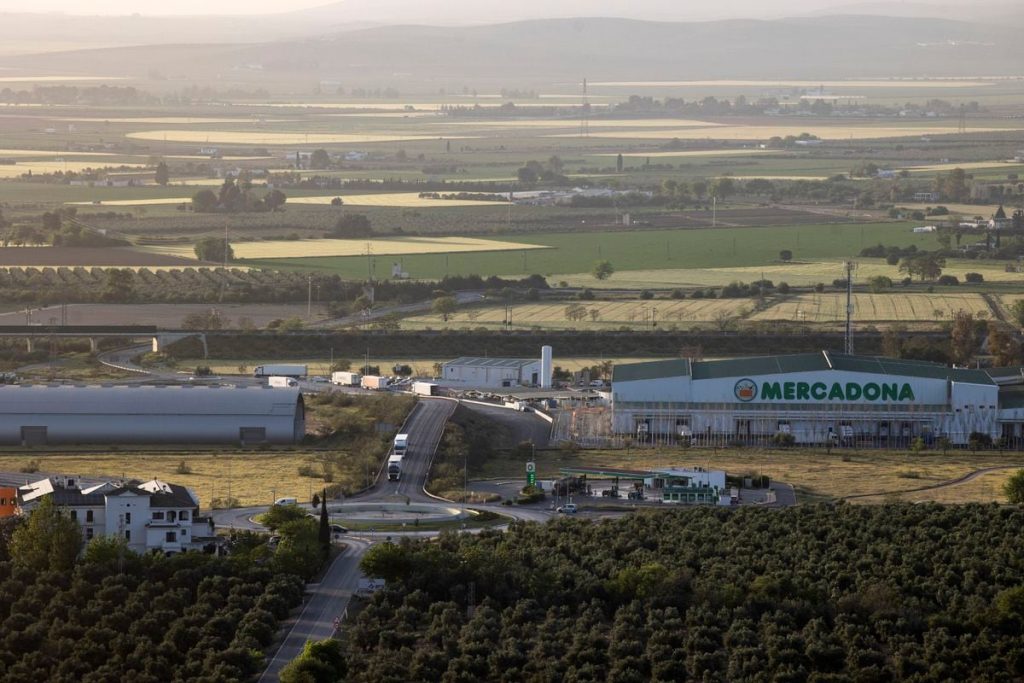At the beginning of the 21st century, Antequera, a city in Málaga with a population of 41,178, had big dreams. Urban plans included two high-speed train stations, a large railway logistics zone, and even an airport along with hundreds of homes. Over the past two decades, most of these plans have become a reality. The latest addition is the Puerto Seco, a multimillion-dollar project aiming to combine freight transport by train and road. Antequera now has the potential to become the main logistics hub in southern Europe. While the city has invested in numerous infrastructure projects, its population has remained stagnant and its tourism industry continues to lag behind the bustling Costa del Sol.
With a historical legacy as a crossroads dating back to the Neolithic period and ancient Roman times, Antequera’s central location in Andalusia has made it a key hub for railways and highways. The city’s strategic position at the intersection of major roads led Mercadona to establish its first logistics center in Andalusia in 2000. Antequera eventually became one of the few cities, alongside Madrid, with two high-speed train stations. The city’s potential for growth through improved transportation connections was highlighted by the development of the Puerto Seco by the French company Grupo IDEC, in partnership with the Andalusian government. This collaboration has seen significant investment and aims to create thousands of jobs in the region.
The current phase of the Puerto Seco project covers 100 hectares, with an initial investment of 50 million euros. Plans are underway to expand the project to 338 hectares with an additional investment of 150 million euros in the coming years. Grupo IDEC aims to position the Antequera logistics area as a key player in multimodal freight transport, linking various modes of transportation. While the project is still in its early stages and awaiting the arrival of businesses, local administrations have been preparing the groundwork with infrastructure upgrades. Antequera’s strategic location and proximity to rail connections, highways, and ports make it an attractive site for businesses looking to expand.
Antequera’s future success as a logistics hub hinges on the completion of key transportation corridors, such as the Corredor Atlántico and the Corredor Mediterráneo, which will connect the region to major ports and markets in Europe. The development of these corridors is crucial for the efficient movement of goods and will significantly impact the success of the Puerto Seco project. Local stakeholders are hopeful that the necessary infrastructure investments will be made to ensure the project’s success and position Antequera as a major logistics center in Spain. The city’s economic growth and development prospects rely heavily on improved transportation links and collaboration between public and private sector entities.
Despite having the necessary infrastructure and tourist attractions, Antequera has struggled to reach its full potential in terms of population growth and economic development. The city has remained stagnant with a population of just over 41,000 residents, having lost 500 residents over the past decade. While being recognized as a UNESCO World Heritage site for its ancient dolmens has boosted tourism, Antequera still lags behind the neighboring Costa del Sol in terms of visitor numbers. The city’s future success will depend on real investment and attracting businesses to establish a presence in the region. Addressing transportation challenges, such as limited bus connections to Málaga and the absence of a commuter rail service, will be critical for Antequera’s growth and economic prosperity. Additional public and private sector investments will be needed to unlock the city’s full potential and drive sustainable development.















